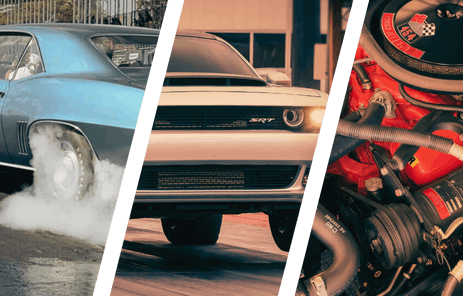
Words and Photos By: Richard Holdener
Mod Motor Muti-Cam Swaps
Though some of us thought Ford made a mistake replacing the original 5.0L with the smaller 4.6L modular motor, the OHC motors are certainly here to stay. Introduced back in 1996 in the Mustang, these non-PI motors are both plentiful and plenty cheap. Since Ford saw fit to upgrade to the PI engine in 1999, the 1996-98 non-PI Mustangs have taken a back seat to the more powerful PI ponies. That doesn’t mean the non-PI guys shouldn’t get some love. It is for the early non-PI owners that we performed these series of cam tests on a 1998 GT.
What do we mean by series? Well, we ran the first cam test on the chassis dyno, then removed the motor and plopped it on the engine dyno for yet another cam swap. It seems like a lot of work to get back-to-back data, but it was necessary to remove the high-mileage motor for a rebuild anyway, so we took the opportunity to perform some testing while we had the opportunity.
The 1998 Mustang GT used for testing had the usual array of minor mods, including a C&L air intake, revised e-prom chip, and long-tube Hooker headers feeding a Magnaflow cat-back exhaust. The mildly modified GT motor was run on the Superflow chassis dyno, first with the stock cam, then again after the installation of XE262H cams from COMP Cams. Equipped with the stock cams, the non-PI GT motor produced 211 hp at 4,350 rpm and 282 lb-ft of torque at 3,550 rpm.
Obviously, Ford designed the OHC mod motor with low-speed torque production in mind. After installation of the small COMP XE262H cams (.500 lift, a 224/232-degree duration split and 114-degree lsa), the peak numbers jumped to 230 hp at 4,750 rpm and 293 lb-ft of torque at 4,550 rpm. The new cams increased both peak power and shifted the peaks higher in the rev range, but the mod motor was still a far cry from a high-rpm screamer. After all, it was making peak power at just 4,750 rpm!

After running the chassis dyno testing, we removed the 2V mod motor and swapped over a number of the small parts to a fresh long block we had waiting. The long block combined forged pistons and rods with a stock crank. Naturally, new rings and bearings were also part of the upgrade, but so too was a set of ported non-PI heads from Ford Performance Solutions. Ideally, non-PI owners should step up to ported PI heads (and PI intake) in this situation, but we elected to stick with non-PI stuff for this test.
The new long block was installed on the engine dyno with the stock (non-PI) intake and Accufab throttle body, Hooker headers, and XE262 H cams. Run in this configuration with a FAST XFI management system, the non-PI motor produced 308 hp and 348 lb-ft of torque. After upgrading to the larger XE274H cams, the peak numbers jumped to 326 hp and 347 lb-ft of torque, but the extra top-end power came with a trade off in low-speed torque.
After the double cam swap, the modified non-PI motor was now ready for installation back in the car.

Hardly a stellar performer with the stock cams, the modified 1998 4.6L 2V Mod motor produced 211 hp at 4,350 rpm and 282 lb-ft of torque at 3,550 rpm on the Superflow chassis dyno. The non-PI 2V motor featured Hooker headers, a complete Magnaflow exhaust system, and a C&L MAF and air intake. After installation of the COMP XE262H (non-PI) cams, the power output of the early 2V motor jumped to 230 hp and 293 lb-ft of torque. Measured on the chassis dyno, there was no loss in power compared to the stock cams, just a sizable increase from 3,300 rpm to 5,700 rpm.

After removal of the engine from the Mustang, we upgraded the motor with a fresh short block and ported non-PI heads. We then performed another cam comparison between the XE262H cams and a larger XE274H cams. Run on the engine dyno with the XE262H cams, the modified (early) 4.6L 2V motor produced 308 hp at 5,200 rpm and 349 lb-ft of torque at 4,100 rpm. After installation of the larger XE274H cams, the peak numbers jumped to 326 hp at 5,400 rpm and 347 lb-ft of torque at 4,000 rpm. The wilder cam timing offered sizable power gains past 4,800 rpm, but lost torque to the smaller cams below 3,800 rpm.
Sources: COMP Cams, compcams.com; Holley/Hooker/NOS, holley.com.
You might also like
Hurricane-Powered Ram Pickup First In The 8s!
Evans' elapsed time was an insane 8.89.3 at 149.10 mph with a 1.602 60-ft. time. You can almost hear the HEMI guys crying



